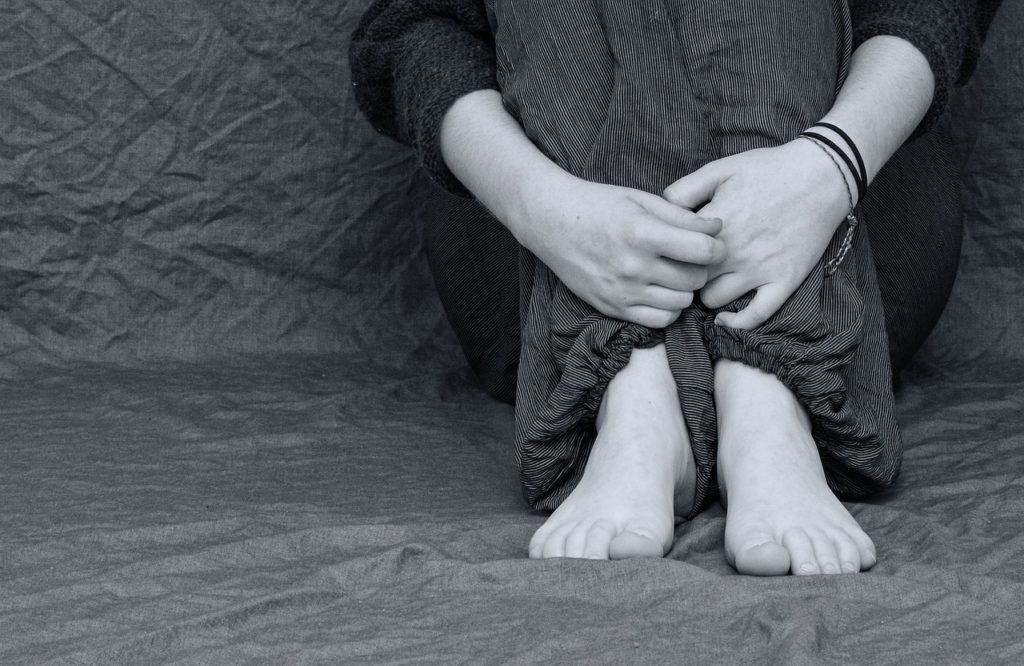
by Nada Hassanein, Stateline
October 11, 2023
When she tried to find help for her daughter’s depression, Michelle Romero was frantic, panicked and heartbroken. She searched and searched for mental health clinicians within her daughter’s insurance coverage network.
But the Houston-area mom of three couldn’t find a psychiatrist nor a psychotherapist who accepted her daughter’s health insurance and was close enough to the family’s neighborhood, she said. In her network, one clinician had closed their practice. Another was at capacity with patients.
So, each week, the family paid about $300 out of pocket for their daughter’s psychotherapy and psychiatry sessions. Romero has maxed out her credit cards.
At Christmastime last year, Romero’s daughter was hospitalized for two weeks. Then 14, she had tried to kill herself. It wasn’t her first attempt: That was when she was a 10-year-old fifth grader.
The family began the new year with a $30,000 hospital bill, of which insurance paid just a portion.
The Biden administration is pushing insurers and state regulators to improve mental health care coverage. The move comes as overdose deaths rise and youth mental health problems grow more rampant, disproportionately affecting communities of color. Inflation and a shortage of mental health care providers, including psychiatrists and specialists who treat adolescents, further hinder access to care.
“Something needs to change,” Romero said. “There are too many people who need help. And there’s not enough doctors.” Insurers, she said, “need to do better.”
The federal Mental Health Parity and Addiction Equity Act, enacted in 2008, doesn’t require insurance plans to offer mental health coverage — but if they do, the benefits must be equal with coverage for other health conditions. That means deductibles, copayments, out-of-pocket limits and prior authorizations — approvals from health plans for a particular service or to fill a prescription — can’t be more stringent than those for other medical care.
But despite the federal law, many insurers continue to charge higher copayments for mental health care, limit the frequency of mental health treatment, or impose more restrictive prior authorization policies, according to The Kennedy Forum, a nonprofit that advocates for equal mental health coverage. A joint report provided this year to Congress by the Department of Labor, the Department of Health and Human Services and the Department of the Treasury validated those assertions.
The Biden administration recently proposed a rule that would strengthen parity under the law by requiring that insurers show how their coverage rules affect patients by, for example, sharing denial rates for mental health care claims compared with other claims. The insurers also would have to provide data on other restrictions, such as prior authorization.
The new rule also would close a loophole that has allowed more than 200 state and local government health insurance plans to opt out of the law. The administration has extended a public comment period through Oct. 17.
The whole thing about parity is realizing that mental health and physical health are the same.
– Kim Jones, executive director of Georgia’s National Alliance on Mental Illness chapter
Since the parity law was enacted 15 years ago, “nobody can claim that we’ve achieved parity,” said Shawn Coughlin, president and CEO of the National Association for Behavioral Healthcare, a nonprofit that represents mental health care providers, programs and facilities. Coughlin said the problem is prevalent across the board — from private insurance plans to Medicaid managed care.
To provide greater oversight, some states have passed their own parity policies. Over the past decade, 10 states have fined insurance companies a total of nearly $31 million for violating parity rules, according to The Kennedy Forum. And since 2018, 17 states have passed legislation requiring insurers to demonstrate compliance on an annual basis, according to the Council of State Governments.
“We’ve been playing this rope-a-dope with them [insurers] now for 15 years. And the fact is that without more stringent enforcement, plans have just basically scoffed at the law and have ignored the law,” Coughlin said. “This is why states have stepped in … because the federal parity law really just does not have any real teeth in this enforcement.”
In most states, patients with private insurance have to go out-of-network for behavioral health care more often than they do for other health care, reports The Kennedy Forum. Narrower networks are a notorious problem for mental health care, compounded by clinician shortages. In Texas, where Romero lives, about 98% of the state’s counties are at least partially designated as mental health professional shortage areas.
In a collaborative with other groups, including Health Law Advocates and the Treatment Research Institute, the nonprofit created a state parity policy trackerand compiled a list of resources to help patients find their state regulators to submit a parity violation claim.
Shortages and dismal reimbursement rates
When her daughter’s asthma flares up, Maria Garcia has no problem getting her insurance to cover a visit to the pediatrician.
But when her sixth grade girl began to suffer severe anxiety — sobbing daily, cutting off her hair and trying to hurt herself — she couldn’t find a psychologist that accepted their insurance and took new patients. The ones who did had a six-month wait time.
Garcia and her husband had to pay out of pocket — around $200 per therapy session each week on top of home-schooling expenses. Garcia had to pull her daughter out of school last year because of her severe anxiety.
“I was desperate. I felt really powerless,” Garcia said in Spanish through an interpreter. “My daughter was saying she wanted to kill herself.”
After months of searching, Garcia found Community Does It, a nonprofit that offers free, culturally competent therapy sessions for immigrant families.
But other nonprofits haven’t been able to remain in operation. Last month, Phoenix House Texas, a drug rehabilitation program for low-income Texas youth, closed its doors, citing unsustainable reimbursement rates.
Because insurers typically reimburse mental health care providers at lower rates than other providers, psychiatrists are less likely to participate in insurance plans, studies show. This forces patients to pay out of pocket, or, if their coverage includes mental health care, file an insurance claim to get partial reimbursement, assuming they’ve met their annual deductible.
“Psychiatrists are actually paid a lot more to deliver services out-of-network than they are to deliver service in-network, which is a clear, natural disincentive to participating in insurance or accepting insurance,” said Dr. Jane Zhu, a primary care physician and professor at Oregon Health & Science University’s Center for Health Systems Effectiveness. “There is a lot of evidence that suggests that these low participation rates amongst psychiatrists in particular are driven in part by low reimbursement.”
Zhu, who researches mental health parity and access to care, noted about 27 states and Washington, D.C., have reported increases in or plans to increase Medicaid reimbursement rates for behavioral health services between 2022 and this year. But in many states, the rate change is minimal.
States parity statutes vary
The American Psychiatric Association created model parity legislation tailored to each of the 50 states and Washington, D.C., with a focus on insurer and state regulator accountability.
Right now, parity policies vary widely, but some states have been making strides toward tightening their rules. Georgia, which the research and advocacy nonprofit Mental Health America ranks 47th in provider availability at 640 residents per mental health provider, last year began requiring health insurers to use “generally accepted” health care standards when reviewing claims, instead of their own non-scientific criteria. Sometimes, insurance plans will deny coverage, claiming the care isn’t medically necessary.
“The whole thing about parity is realizing that mental health and physical health are the same,” said Kim Jones, executive director of Georgia’s National Alliance on Mental Illness chapter.
Like Romero and Garcia, Jones couldn’t find an in-network clinician for her own 9-year-old son, who suffered panic attacks. He was on a three-month wait list for a psychologist, an hour away and out-of-network.
Meanwhile, statutory language in other states, such as Florida, poses more hurdles.
The state — 46th in access to care, according to Mental Health America’s report — requires insurance plans to offer “optional coverage” for mental health conditions.
“The insurance company or the employer can offer or choose to offer it as part of their package. It doesn’t mandate it,” explained Marni Stahlman, president and CEO of the Mental Health Association of Central Florida. “That’s where we see the loophole.”
What’s more, the statute says a plan can limit outpatient mental health treatment to a maximum of $1,000.
“If benefits are provided beyond the $1,000 per benefit year, the durational limits, dollar amounts, and coinsurance factors thereof need not be the same as applicable to physical illness generally,” the Florida statute reads.
Cherlette McCullough, an Orlando, Florida-based mental health counselor who recently began accepting insurance, said one client’s plan only covers five sessions of psychotherapy.
“It’s extremely limited,” McCullough said. “There can be one traumatic incident where treatment needs about 13 sessions to work through it. So, what happens after she completes those five sessions?”
It would be “unheard of,” Stahlman of the Mental Health Association of Central Florida said, if a breast cancer patient “was told that she could have three sessions of chemotherapy.”
Back in Texas, many therapy sessions later, Romero’s daughter is better and recovering.
Months ago, Romero had emptied out the medicine cabinet for fear of her daughter using pills.
In their place, Romero left a message.
She cut a heart out of pale yellow construction paper and pasted it inside for her daughter. On it she wrote the words:
“You are worth it. You are loved.”
Stateline is part of States Newsroom, a nonprofit news network supported by grants and a coalition of donors as a 501c(3) public charity. Stateline maintains editorial independence. Contact Editor Scott S. Greenberger for questions: info@stateline.org. Follow Stateline on Facebook and Twitter.


